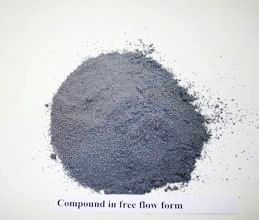Products
Introduction of Filled PTFE Compound
In spite of PTFE's remarkable properties, the pure or unfilled PTFE is inadequate for many engineering applications. It is soft, and easy to deform under pressure.Now we can add some filler in PTFE to improve its:
Mechanical properties
Fillers increase the hardness of PTFE and reduce cold flow or creep. Tensile strength and elongation usually are reduced depending on the filler type and percentage.
Thermal properties
Filler increase thermal conductivity. Fillers also reduce liner coefficient of thermal expansion then increase thermal dimensional stability.
Electrical properties
Some filler increase electrical conductivity.
Tribological properties
Fillers reduce wear rate and friction.
Types of fillers
●Glassfiber-the most common filler
* Reduces creep
* Chemically stable (except to strong alkalis and hydrofluoric acid)
* Performs well in oxidizing environments
* Improves the wear characteristics of PTFE
●EG Carbon
* Reduces creep
* Increases hardness
* Raises thermal conductivity
* Improves wear rate
* Electrical conductivity - antistatic
* Lowers tool wear during machining
●Carbon powderbr
* Reduces creep
* Increases hardness
* Raises thermal conductivity
* Electrical conductivity-antistatic
* Improves lubricity
●Carbon fiber
* Reduces creep
* Increases flex and compressive modulus
* Increase hardness
* Inert to HF and strong alkalis
* Less carbon fiber needed than glass fiber to achieve the same effects
* Raises thermal conductivity
* Increases wear resistance
●Graphite
*Extremely low coefficient of friction
*Chemically inert
*Usually incorporated with other fillers such as glass or carbon
*Increases wear resistance especially against soft metal
●Metallic fillers
*Bronze is the most common metallic filler, the other choice is stainless steel
*Reduces deformation under load
*Raises thermal and electrical conductivity
●Molybdenum disulfide
*Increase hardness
*Reduces friction
*Usually combined with other fillers such as glass or bronze
●Crystalline polymer
*Increases wear resistance especially against soft metal
*Decreases coefficient of thermal expansion
*Raises PV limit due to adhesive wear transfer mechanism
*Lowers friction coefficient
*FDA compliant
Standard products
15GL- 15% glass fiber
20GL- 20% glass fiber
25GL- 25% glass fiber
15GL-5M- 15% glassfiber+5%MoS2
20GL-5GR-20% glassfiber+5% graphite
15GR- 15% graphite
25GR- 25% graphite
15CAR-15% carbon powder
25CAR- 25% carbon powder
10CF- 10% carbon fiber
15CF- 15% carbon fiber
30BR-10CF- 30%bronze+10% carbon fiber
40BR- 40% bronze
55BR-5M- 55% bronze+5%MoS2
60BR- 60% bronze
PI20- 20% polyimide
SU20- 20% Ekonol or Sumikasuper
All above grades can be supplied in the form of free flow and non-free flow. Besides above standard grades, any type and percentage of filler or pigmentation are available upon your request. We assure you of our best service and most competitive price.

Compound in Free-Flow Form


